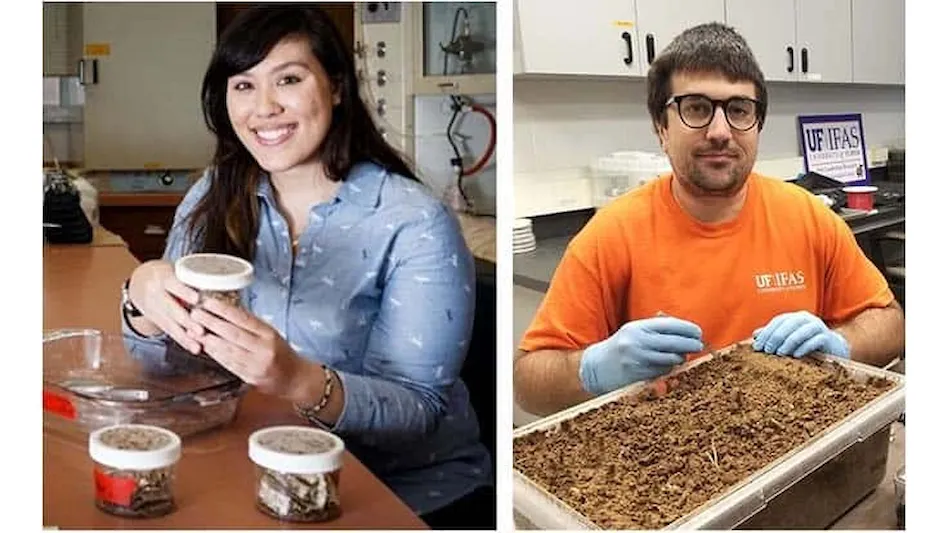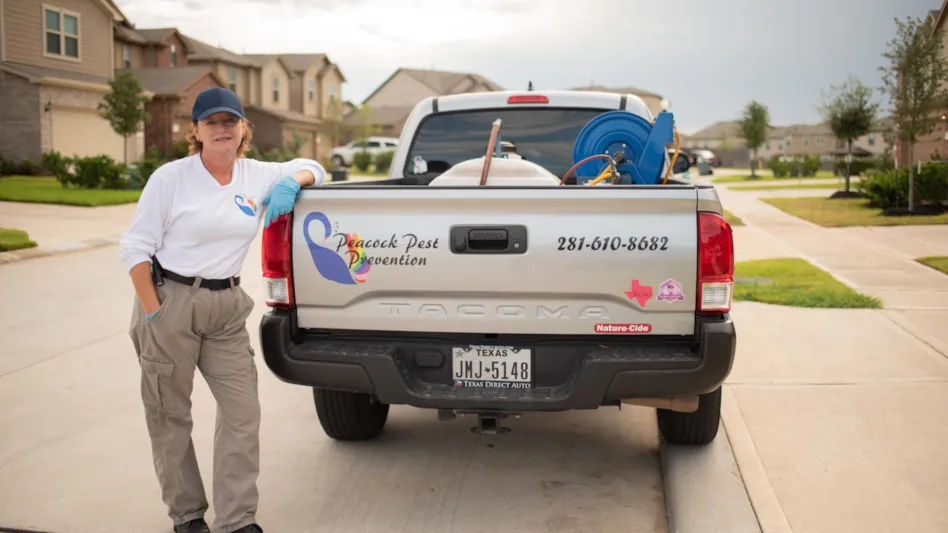The risk of pet exposure to pesticide products is far greater than the risk of human exposure for many reasons. Because pets are curious, they sniff around and when they find something appealing, they roll in it or eat it. Pets often are turned out onto treated turf and flower beds where their feet pick up pesticide materials that subsequently are ingested as they groom themselves. In addition, pets are more likely to be present during pesticide applications than their owners.
A SCARY QUESTION. In most cases, the risk of injury to a pet through the use of pesticides is minimal. Unfortunately, it becomes a serious issue when your company receives a call and your customer says, "I think my pet has been poisoned." Typically, our company receives two or three of these calls a year; fortunately, there rarely are any consequences. How you respond to these incidents frequently determines the outcome. A few examples will set the stage for responding to incidents of this nature.
In the past, one of the most frequent pet poisoning problems was related to flea control. One common industry recommendation is to have the pet treated by the veterinarian concurrently with a treatment of the premises.
Coincidental to a premises treatment with chlorpyrifos (organophosphate), my pet cat was dipped with ronnel (organophosphate) and a DDVP (organophosphate) flea collar was placed on him. It is easy to see how overexposure caused the resulting organophosphate poisoning. Fortunately, my cat recovered quickly after the flea collar was removed.
OVEREXPOSURE EXAMPLES. A pest control technician servicing an account carried several products inside in his service bag that he left by the door. The service bag was left unattended for just a few minutes while he talked with the customer, but it was long enough for the customer’s dog to eat the contents of several service containers (i.e., carpenter ant bait).
More recently a technician used tracking powder to treat an apartment for mice. After applying the product, he left the cap off the end of the bulb duster and as he left the apartment, a trail of tracking powder was left across the floor through which the cat subsequently walked.
While neither of these incidents resulted in serious injury, they could have. Two years ago, I was involved in a lawsuit in which a home buyer was suing a seller over the care and treatment of their four dogs following exposure to D-Con Mouse Bait. As the story goes, the home buyer requested treatment as the house was infested with fleas and mice. The seller hired a pest management company to treat for the fleas, but they applied the mouse bait themselves. The seller moved without informing the buyer that the D-Con had been used or that the unconsumed bait had not been removed. The buyer moved in and the dogs found and ate almost 10 packages of the bait. Unfortunately, three of the four dogs died. Pest management professionals should always keep in mind that we are guardians of the environment — and that includes pets.
SUGGESTIONS. Here are several suggestions for pest management companies that are working with clients with pets:
• Train technicians on the safe handling of pesticides around pets in order to prevent exposure.
• Respond to the customer’s concern in a timely fashion and collect information regarding the incident.
• Identify resources that could be useful in the event of pet exposure.
TRAINING. Train your technicians to do the following:
• Pesticide products should be transported in a safe manner so that pets cannot gain access to the product within a vehicle and service containers.
• Products should not be left unattended.
• Pesticides should be applied in areas that are inaccessible to pets.
• In areas where pesticides will be applied, pet food dishes and toys should be removed.
• Pet owners should be advised regarding reentry times on treated areas, e.g., carpet, turf, etc.
• Spills should be avoided; however, if they occur, the pet should be kept out of the area until the spill is cleaned up.
• Be aware of sensitive species at the service address, e.g., watch out for fish and pyrethroids.
TALKING WITH THE CUSTOMER. When responding to the customer, think about the following:
• Respondents should be sympathetic to the customer’s concerns (remember some people value the health of their pets more than their own).
• Explain what products were used and how they were applied.
• Attempt to determine the following from the customer: the animal’s access to the treated area; time of pesticide application; onset of symptoms; and whether they used on-animal products or other pesticides in and around the home.
• Obtain from the technician’s service ticket: product applied; rate of application; site of application; and for exterior applications, weather conditions following application.
• Offer to provide both the label and MSDS to the customer and/or to their veterinarian.
• If they still express concern, suggest that the customer take the pet to a veterinarian and try to get the veterinarian’s name.
ADDITIONAL RESOURCES. Here is some more information:
• Consult with the customer’s veterinarian.
• Suggest that the vet contact a veterinary toxicologist to help with the exposure profile (which takes into account the product, site of application, rate of application and product LD50).
The following resources may prove useful:
• EXTOXNET: an objective source of toxicology information (human and animal).
• National Animal Poison Control Center: 800/548-2423, a 24-hour hotline staffed by a veterinary toxicologist (charge per call: $35).
• Animal Poison Hotline: 888/232-8870, a 24-hour hotline staffed by veterinary technicians (charge per call: $30 to $35).
The author is technical director of American Pest Management, Takoma Park, Md. He can be reached at 301/891-2600 or rkramer@pctonline.com.

Explore the March 2001 Issue
Check out more from this issue and find you next story to read.
Latest from Pest Control Technology
- PCO Follows the Carpenter Bee Clues
- Bird Control Can Be Lucrative, But it’s Not for Every Company, PCOs Report
- Gerry Wegner on the New PCT Field Guide to Stinging and Biting Arthropods
- PCO Bookkeepers & M&A Specialists Recognize Pinnacle Performance Award Winners
- Ground Control
- Scientists, PMPs Collaborating to Map Termite Distribution in Southern U.S.
- Viking Pest Control Organizes a Charity Bike Build for Local Families
- Gaining Control of Structure-Infesting Carpenter Ants





